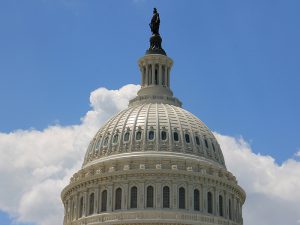
GAO report looks at Navy multiyear procurements
Written by Nick Blenkey
Image: GAO
Anyone who has ever tried to plow through Navy budget request documentation knows that it’s strong on patriotic sentiment but at times fuzzy on a lot of other things.
It seems that congressional conferees have been concerned that recent Navy budget requests underfunded critical weapon system programs that were using multiyear procurement authority. According to GAO (the U.S. Government Accountability Office), they also questioned whether the Navy’s budget requests in recent years for programs using multiyear procurement accurately reflected the service’s most important priorities.
The conferees included a provision in the Consolidated Appropriations Act, 2022 for GAO to review certain activities related to Navy multiyear procurements in recent years.
The GAO has responded with a report that addresses (1) the extent to which Navy programs fulfilled their multiyear procurement plans in fiscal years 2021 and 2022; and (2) factors contributing to any budget requests for fiscal years 2021 and 2022 that did not include the multiyear procurement quantities stated in the contracts.
WHAT GAO FOUND
The Navy used multiyear procurement for seven critical weapon system programs in fiscal years 2021 and 2022. This contracting method can save the government money through procurement efficiencies but can include future financial commitments. GAO reviewed the seven programs and found that the budget requests for three programs included quantity reductions when compared to their multiyear contracts or previous Navy plans. According to GAO, this hampered efforts to meet warfighting needs:
- DDG 51 destroyers. The budget request for fiscal year 2022 included funds to procure one of the two ships in the program’s multiyear contracts. Instead of requesting funding for the second ship, the Navy requested $33 million to cover the government’s cancelation liability for reducing its procurement to one ship in fiscal year 2022.
- V-22 aircraft. The budget request for fiscal year 2022 included funds to procure eight of the 11 aircraft in the program’s multiyear contract for the budget year. The Navy used additional aircraft funded but not procured in fiscal year 2021 to offset the reduced request and meet the stated contract quantity for fiscal year 2022.
- Virginia class submarines. The budget request in fiscal year 2021 included funding for one submarine. This met the multiyear contract quantity but departed from previous multiyear procurement plans, the steady practice of procuring two of the submarines each year, and congressional direction.
Navy officials told GAO that affordability was the primary driver leading to the reduction in quantities requested for DDG 51 and V-22 in the fiscal year 2022 budget. However, GAO found that Department of Defense financial management regulation does not require the Navy to notify the congressional defense committees of its rationale for budget decisions that do not support the procurement quantities stated in multiyear contracts. The lack of such notification can hamper the ability of the committees to oversee programs and make decisions without having to request supplemental information and explanations from the Navy.
The Navy included additional quantities for the DDG 51, V-22, and Virginia class programs in unfunded priorities lists provided to the defense committees. Congress ultimately decided to fund the procurement of additional quantities.
CONCLUSIONS
“As illustrated by recent events for the DDG 51 and V-22 programs, when budget requests do not align with the multiyear contracts, Congress faces a trade-off about whether to accept budget decisions counter to expectations or take action to offset them,” says the report, noting that “the acceptance of these DOD budget request decisions can contribute to shortfalls to the warfighting capability need that was expected to be addressed as part of the multiyear procurements. In contrast, if Congress chooses to prevent programs from canceling multiyear procurements, such as it did by restoring over $1.6 billion for the second DDG 51 ship in fiscal year 2022, it will potentially result in higher overall budgets to support DOD or necessitate changes to the funding for other DOD programs.
“While nothing precludes the Navy from deciding to reduce its multiyear procurements below the contract quantities, the lack of a DOD requirement to provide clear, timely information to the congressional defense committees on the factors contributing to such a decision can present challenges. Specifically, the lack of notification can hamper the congressional defense committees’ oversight and Congress’s ability to make well-informed funding decisions without having to request supplemental information and explanations from the Navy.”
WHAT GAO RECOMMENDS
GAO is making one recommendation to the Department of Defense, that it establish a requirement to ensure that the congressional defense committees receive notification of the rationale for any budget requests that do not fund the procurement quantities stated in multiyear contracts. The Department of the Navy concurred with the recommendation.
- Read the GAO report



